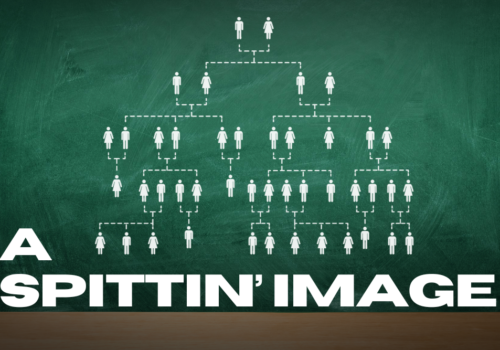Today, we look at the form for man’s making: love and likeness.
In comprehending why man was made, there are two words embedded in two Scriptures that we need to understand.
1. “…for God is love” (1 John 4:8);
2. “God said, let us make man in our image, after our likeness…” (Genesis 1:26).
Let’s unpack those two words: love and likeness.
Here is a principle of divine love: It must have a visible object; it must be real and practical and not just ideal and sentimental. It must have a visible object; it cannot otherwise be verified to our own consciousness as real. Thus, it verifies as well as manifests itself. Divine love goes forth towards created beings; it seeks created beings towards whom it may go forth. [1]
This divine love existed in the beginning, where, in the mystery of the Trinity, this difficult to understand fellowship of the three-in-one shared the perfect endearments that love defines.
Yet such love was resting and not giving.
It was the repose rather than the activity of love.
If it was to be manifested as a love that gives, a love that is active and magnifies or benefits its objects, then there must be creation.
Thus, the world was fashioned: “For thus saith the LORD that created the heavens; God himself that formed the earth and made it; he hath established it, he created it not in vain, he formed it to be inhabited: I am the LORD; and there is none else” (Isaiah 45:18).
Indeed, the earth was formed to be inhabited. It was fashioned to be occupied by men created in the likeness of God and who are to love as God is.
But in the fall, the image and likeness of God—the original righteousness given to man by God in the creation—and the divine attribute of love that gives rather than receives, was lost.
Instead of giving glory to God, it became man’s nature to give glory to self. Instead of giving unconditional love to others, it became man’s desire to love himself.
Therefore, for man to return to his original form of love and likeness, God sent for His Son Jesus who, “… made himself of no reputation, and took upon him the form of a servant, and was made in the likeness of men” (Philippians 2:7). All this so that in accepting Christ’s death we might be made in the likeness of God.
As Paul would say to the Colossians: “And have put on the new man, which is renewed in knowledge after the image of him that created him” (Colossians 3:10).
Through our redemption by Jesus Christ we may revert to man’s original purpose and practice of love and likeness. However, we can never return to that original state as if the fall never transpired.
The fall forever changed life in this world and we will constantly be in battle with our flesh. The form of fallen flesh is made to love self and glorify it; whereas the form of Lord that shaped the redeemed desires to love others and glorify God.
Thus the word of the Lord: “This people have I formed for myself; they shall shew forth my praise” (Isaiah 43:21 KJV).
[1] Robert S. Candlish, First John (Grand Rapids, MI: Kregel Publishers), 1984, page 390.



